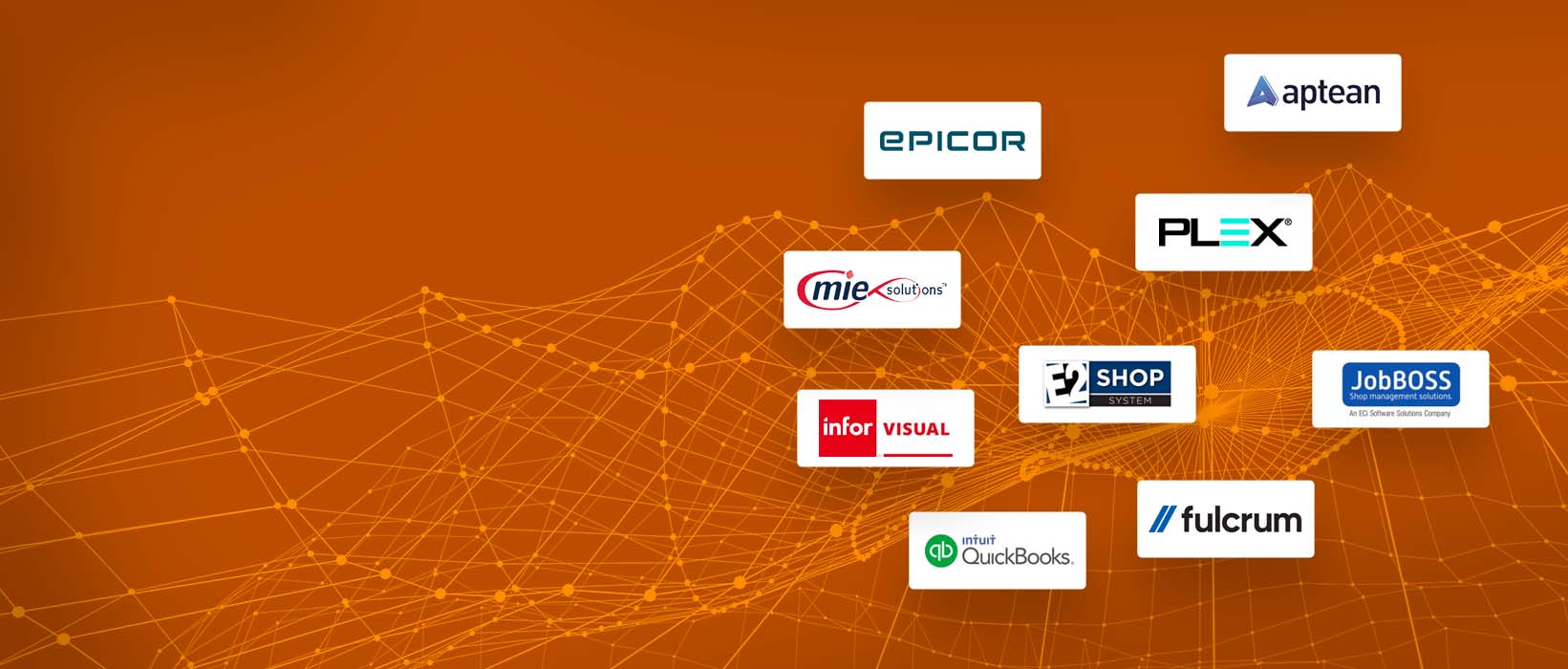
Is your ERP setting you up for failure?
ERP systems are intended to be a revolutionary asset to the manufacturing companies that implement them. However, while functional in a variety of aspects, their weakness lies in the Customer Relationship Management (CRM) and Configure, Price, and Quote (CPQ) phases. While some ERPs were designed for manufacturing businesses, all manufacturing businesses are different depending on the technology and processes they use to make parts.
ERP systems have tried to accommodate for this flexibility, but because they are designed for resource planning, they must maintain some rigidity to ensure that the system’s modules continue to be interoperable with data flowing across each step in the value chain. While the adaptability of ERP software is accelerating, even modern solutions do not account for the unique attributes or quoting needs of each manufacturer. When manufacturers quote through their ERP system, they are often forced into this rigidity that makes it really hard to price parts.
Furthermore, while ERP systems are designed for resource planning, quoting does not always require this as you often send more quotes than you have resources for with the expectation of a certain win rate. Therefore, quoting in an ERP system results in upfront process planning and a lot of unnecessary clicks. This means that manufacturers are spending time overengineering quotes in their ERP system, while data shows that they might only win 30% of the jobs. While they build and spec the job within their ERP solution, the customer may already have accepted a quote from a competitor.
Look for the following symptoms within your organization to spot if it is time to invest in software to supercharge your ERP:
1. People use Excel spreadsheets to manage specific processes
When quoting with an ERP system, many manufacturers introduce secondary systems like Excel for flexibility, creating formulas that save them time and help them get more granular. The challenge with this approach is that manufacturers then have to manually enter those calculations into their ERP systems. This double data entry is time-consuming, error-prone, and slows down your response rate to shops. Using Excel also creates silos of information, where each Excel sheet holds important data that can be hard to find and reference, or run analytics on to catch mistakes.
2. There is printed paper and stacks of folders sitting on every desk
Many manufacturers are stepping out of their ERP systems and printing documents so their team can collaborate on them and track their progress through the quoting process. This approach causes risk and creates additional silos of information that are rarely referenced once a job is won.
3. You live out of your email inbox for quote tracking and prioritization of quoting efforts
When using email for quote tracking and prioritization, it can cause a single point of failure when people are out of the office. It also creates a risky situation where work can fall through the cracks, causing quotes to be missed.
4. Input fields no longer represent the functionality they were originally meant for
Most ERP systems are designed to support a wide variety of users, thus they have generic description fields that end up getting used in different ways depending on the type of manufacturer. This makes it really hard to drive consistency and searchability of data. For example, most ERP systems lack fields to represent information like length, width, and thickness of parts. Manufacturers will often create workarounds for capturing this information, like potentially putting this information in the description field. This workaround does not provide structured information and makes it impossible to filter based on that information. This practice also breaks a lot of the ERP’s intended resource planning functionality.
5. You still use out-of-the-box fields and logic, rather than ones customized to your business
Your ERP system was designed to manage the shop floor and the resources in your business, not sales and quoting in the front office. While most ERP systems have quoting and customer modules, these are proving to be inadequate in meeting the demands of modern buyers because they are not flexible enough. Costing is dictated by the ERP system and not the way the manufacturer runs its processes.
6. You lack secure tools to streamline communication with your team as well as with customers and external vendors
COVID-19, and the urgency of the work related to the Pandemic, triggered a need for better communication tools and spurred many companies to accelerate their reliance on their ERP systems as a communication tool. The challenge with this is that many ERP systems lack secure, in-context collaboration tools, or require you to add modules for an additional fee.
Every day, thousands of manufacturers are trying to maximize the functionality of their legacy ERP systems on very tight budgets because upgrading the system may not be a feasible option. So what is the answer? You don’t want to get rid of your ERP system, you just want to quote smarter and faster. What if you could build a quote without having to build out the entire job in the ERP? What if you could be fully confident in the prices you quote and get quotes out within 24 hours or less?
One solution to this problem is extending the ERP system’s functionality by integrating with CPQ software, like Paperless Parts. There are a lot of companies that sell CPQ systems, but not a lot of them are designed specifically to the needs of manufacturers and are at a price point that is attainable for manufacturers in the market today. Paperless Parts is the most powerful and flexible configure price quote engine that easily adapts to each manufacturer’s workflow. The system leverages geometric features to power your pricing formulas helping you send faster quotes.
Supercharge Your ERP:
10 Reasons to Integrate Your ERP With Paperless Parts

